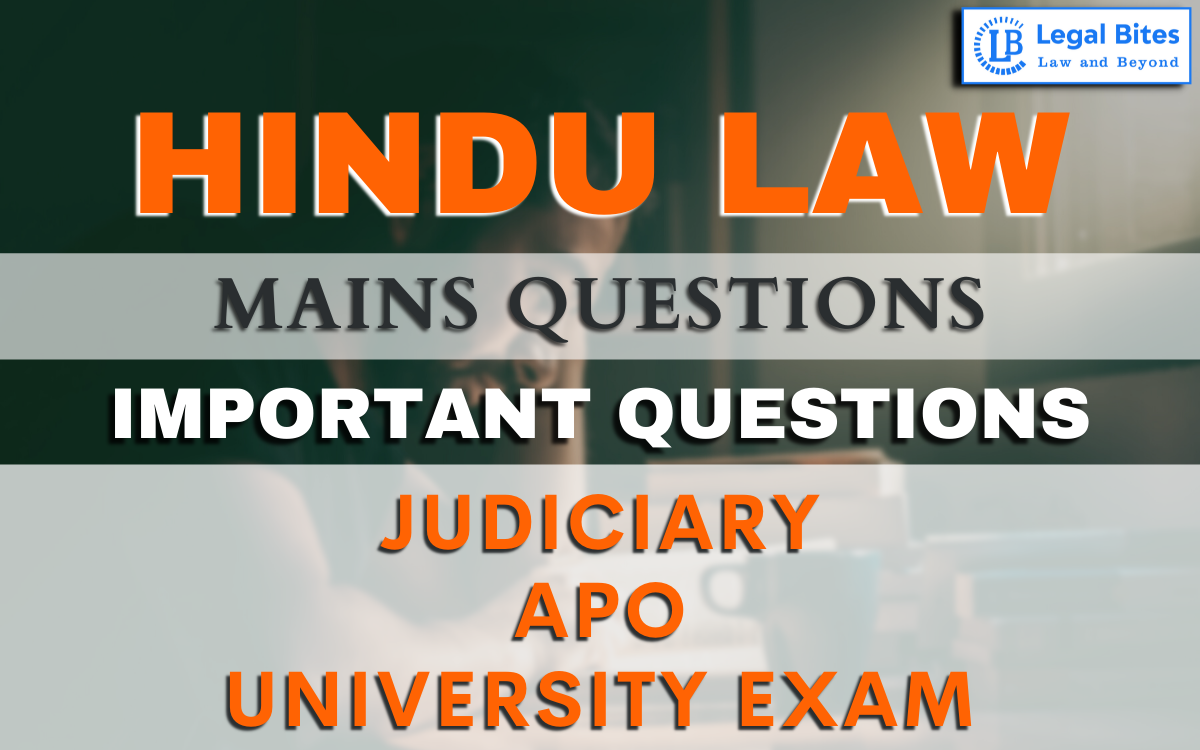Hindu Law Mains Question Answer Series 3: Important Questions for Judiciary, APO & University Exams | Part – III
The Hindu Law Mains Question Answer Series 3, includes a comprehensive set of questions for Hindu Law.

The Hindu Law Mains Question Answer Series 3, includes a comprehensive set of questions for Hindu Law, including modules such as Karta of a Joint Hindu Family.
Legal Bites presents Part III of the Hindu Law Mains Questions Series. The questions listed here, which are arranged by section, will help students studying for Judiciary, APO, or University Exams. Candidates can use Legal Bites' list of questions to help them determine the most important and often asked questions, as well as practice their aptitude and knowledge.
Answering questions is a continuous process that is an inevitable component of any test preparation, as we all know. A well-written response displays not just a candidate's knowledge, but also his or her ability to tailor the content to the question's requirements.
It is vital to thoroughly prepare for this exam to pass it. To attain mastery over the subjects studied, applicants only need to keep practicing these questions in the months coming up to the examinations. Following it, the candidate's confidence level, as well as their scores, will vastly improve.
Hindu Law Mains Question Series Part III
Question 1
- What is partition and how does it differ in Dhayabhaga and Mitakshara Schools? Name some properties which are incapable of division.
- Write a note on notional partition— A joint Mitakshara family consists of M and his two sons N, O and sons NS and a daughter ND of N. N dies. Divide the property of N. [UPJS 1992]
Question 2
Question 3
Write the difference between joint family and self-acquired properties. [BJS 1986]
Question 4
Write a short note on the self-acquired property. [BJS 2006]
Question 5
Write a short note on Hindu Undivided Family. [BJS 2011]

